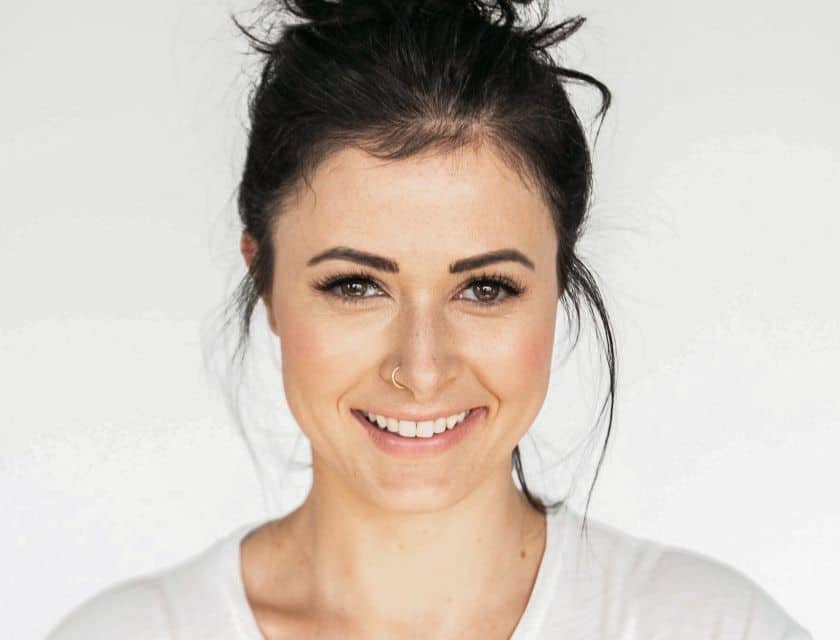Treatments
What is Laser Resurfacing? Top 5 Things to Know
Laser resurfacing is a skincare treatment using laser energy to improve the texture and tone of the skin (for wrinkles, scarring, etc).

What is laser resurfacing?
Laser resurfacing is a skincare treatment using laser energy to improve the texture and tone of the skin (for wrinkles, scarring, etc). Laser resurfacing can be either non-ablative, which means that heat is delivered into the skin without breaking the skin barrier, or ablative, which means that the laser actually removes some of the skin, creating breaks in the skin as part of the treatment. Ablative laser resurfacing is a deeper treatment that is generally able to achieve a greater improvement in skin concerns with fewer treatments, but it also requires longer healing time. Non-ablative laser resurfacing can also be effective, but generally requires several sessions, each with shorter healing time, to achieve similar results.
There are many different brand-name lasers on the market, so figuring out exactly what kind of treatment you will be getting can sometimes be confusing. In general, ablative laser resurfacing is done with one of two types of lasers: a CO2 laser, or an Erbium YAG laser. Both of these lasers target water in the skin and can achieve similar treatment outcomes, but there are some differences between the two. At CLARA, we use an Erbium YAG laser for our resurfacing procedures, as we feel this device gives us the most flexibility to treat many concerns in many different types of patients.
The most common reasons we use laser resurfacing at CLARA are for acne scarring, wrinkles, extensive sun damage, and scars from surgeries or trauma.
Does laser resurfacing hurt?
Light or non-ablative laser treatments can feel like a rubber band snapping against your skin and generally patients tolerate these treatments without any anesthesia other than cold air. Sometimes topical anesthesia ointment is helpful. Deeper resurfacing procedures will typically require topical anesthetic ointment applied to the skin, sometimes in combination with injections of anesthesia to numb the facial treatment areas (these are called regional nerve blocks).
At CLARA, we prioritize patient comfort during laser procedures, and will discuss with you the ways we can keep you most comfortable during your laser treatment. After the procedure, most patients do not experience pain. Feeling heat in the skin is common after laser treatments, so we have our patients use gauze soaked in chilled water, or ice packs wrapped in clean towels, to soothe the warm sensation in the skin.
Who is a good candidate for laser resurfacing?
Laser resurfacing can be done safely on almost everyone, but because melanin-rich skin is at a higher risk of discoloration with deeper treatments, it is very important to choose a doctor who is very experienced in treating all skin types. At CLARA, we use an Erbium YAG laser for resurfacing. This type of laser can be used safely in lighter skinned African American, Latino, and Asian patients, with some careful adjustments in setting. In general, patients with very dark skin will often need to choose another method for skin resurfacing, like microneedling.
When is the best time to get laser resurfacing?
Skin that has been treated with lasers is extra sensitive to sun exposure. For that reason, many dermatologists consider fall and winter to be unofficial “laser season”, because we tend to get less sun exposure at these times of year. Regardless of when you have your treatment, you will need to be very cautious about sun exposure in the weeks following the procedure. Especially in deeper laser resurfacing, your skin is generating a whole new layer of cells, and any sun exposure can cause them to darken more than your normal skin tone. We recommend a broad-spectrum, physical sunscreen with SPF of 30 or higher every single day, as well as wearing a hat and choosing shade, to minimize sun exposure while you are healing.
What can I expect after laser resurfacing?
Depending on the depth of resurfacing, you should plan for between 1-2 weeks of downtime. Patients undergoing light to moderate treatments will have about 1 week of healing, during which time you will have to follow a specific cleansing and moisturizing regimen. Your skin will remain slightly pink for a few weeks after treatment. Patients undergoing moderate to deep treatments will have 10-14 days of healing. After this healing period, skin will remain slightly pink for a few months following treatment. We always provide detailed instructions to our patients about how to care for your skin following treatment, and follow up with you often to ensure that you are progressing as we would expect. By carefully sticking to the after care instructions, you can maximize your results and healing.
Regardless of the depth of treatment, it will take some time to see the full effects of laser resurfacing. We typically tell our patients that it takes 3-4 months to see full results. In the time between the immediate healing period and final results, your skin is busy building new collagen to restore a smooth, firm texture to the skin, and this process takes time. Some patients continue to note improvement up to 6 months following treatment! The best part about laser resurfacing results is that your new collagen is permanent, though it will continue to age with you over time.
At CLARA, we are dedicated to providing the highest quality treatments to our patients to achieve the best possible results. If you are curious about using laser resurfacing to improve your skin, come in and meet with Dr. Bialas or Dr. Hooten for a consultation. Good skin starts here!
Get your customized skin care plan.
We respect your privacy and your inbox. We’ll never sell your address. Unsubscribe anytime.
© 2022 Clara Dermatology. All rights reserved.